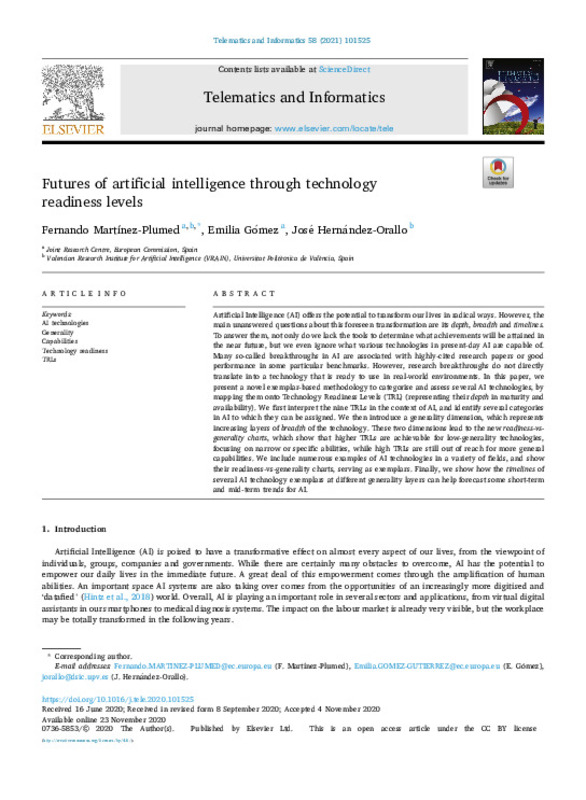JavaScript is disabled for your browser. Some features of this site may not work without it.
Buscar en RiuNet
Listar
Mi cuenta
Estadísticas
Ayuda RiuNet
Admin. UPV
Futures of artificial intelligence through technology readiness levels
Mostrar el registro completo del ítem
Martínez-Plumed, F.; Gómez, E.; Hernández-Orallo, J. (2021). Futures of artificial intelligence through technology readiness levels. Telematics and Informatics. 58:1-37. https://doi.org/10.1016/j.tele.2020.101525
Por favor, use este identificador para citar o enlazar este ítem: http://hdl.handle.net/10251/189359
Ficheros en el ítem
Metadatos del ítem
| Título: | Futures of artificial intelligence through technology readiness levels | |
| Autor: | Gómez, Emilia Hernández-Orallo, José | |
| Fecha difusión: |
|
|
| Resumen: |
[EN] Artificial Intelligence (AI) offers the potential to transform our lives in radical ways. However, the main unanswered questions about this foreseen transformation are its depth, breadth and timelines. To answer them, ...[+]
|
|
| Palabras clave: |
|
|
| Derechos de uso: | Reconocimiento (by) | |
| Fuente: |
|
|
| DOI: |
|
|
| Editorial: |
|
|
| Versión del editor: | https://doi.org/10.1016/j.tele.2020.101525 | |
| Código del Proyecto: |
|
|
| Agradecimientos: |
This material is based upon work supported by the EU (FEDER), and the Spanish MINECO under grant RTI2018-094403-B-C3, the Generalitat Valenciana PROMETEO/2019/098. F. Martinez-Plumed acknowledges funding of the AI-Watch ...[+]
|
|
| Tipo: |
|









